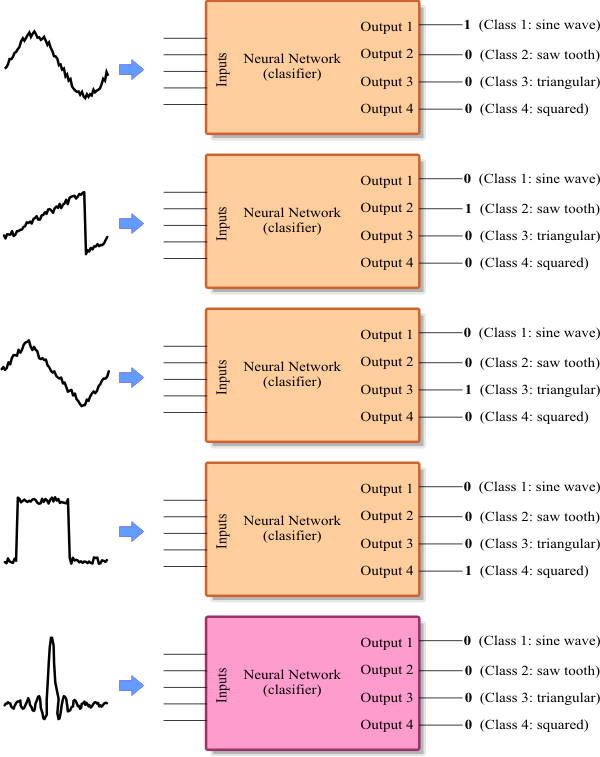| Tip |
| An ANN can be trained using clean or noisy data. In some applications, a noisy data set can be used for training. For instance, the ANN may improve their performance during validation if both sets (the training set and the validation set) are similar. If the ANN is going to be used under noisy data, it is better to train the ANN with noisy data. |
| Problem 1 |
| Create a New Project called NoisyClass (You must select: Multi-layer Network and Classification in the New Project Dialog). Edit the BuilTrainSet.lab file to build an appropriate training set for the classification of four noisy signals: the sine, the sawtooth, the triangular, and the squared. These signals will be contaminated with 10% of noise. The input training set must include 400 waves of each class and 500 additional cases for the sinc function for rejection. Use 2100 training cases and 64 inputs. Each training case has a wave with a random phase. Note that the training set target has only four columns. |

| Problem 2 |
| Edit the BuilValidSet.lab file to build an appropriate validation set for classification of the noisy four signals. Use 950 validation cases (200 cases for each class and 150 for rejection). The validation set must contain signals contaminated with 10% of noise. |
| Problem 3 |
| Edit the Train.lab file to design and train an ANN for classification of the four signals. |
| Problem 4 |
| Edit the CheckTraining.lab file to check the training: (a) Compute the confusion matrix for the ANN using the training set. (b) Plot the error for each network output. (c) Save the confusion matrix as a vector image (trainConf.emf). |
| Problem 5 |
| Edit the Validation.lab file to perform the validation of the ANN. (a) Compute the confusion matrix for the ANN using the validation set. (b) Plot the error for each network output. (c) Save the confusion matrix as a vector image (validConf.emf). |
| Problem 6 |
| Generate a report in Microsoft Word. Write some conclusions in the report focusing on the problems that were faced during the simulation and how these problems were or could be solved. |